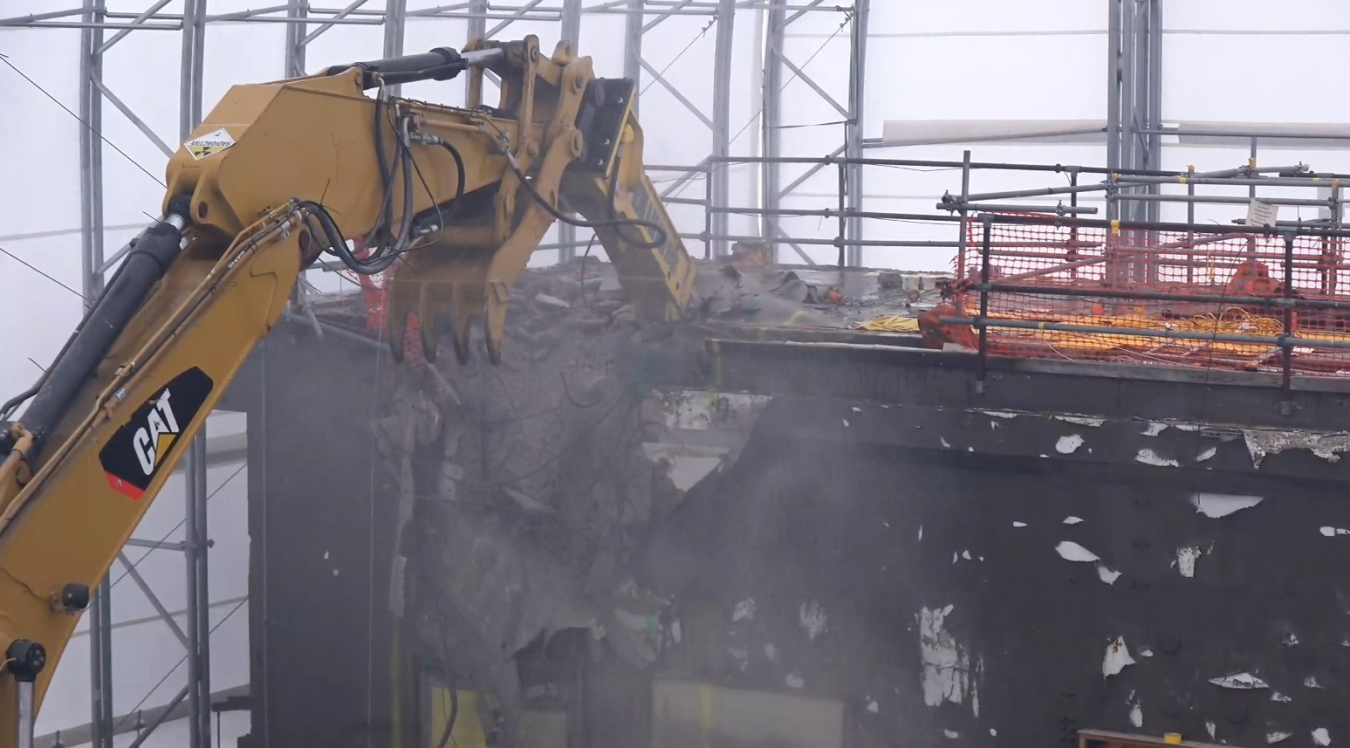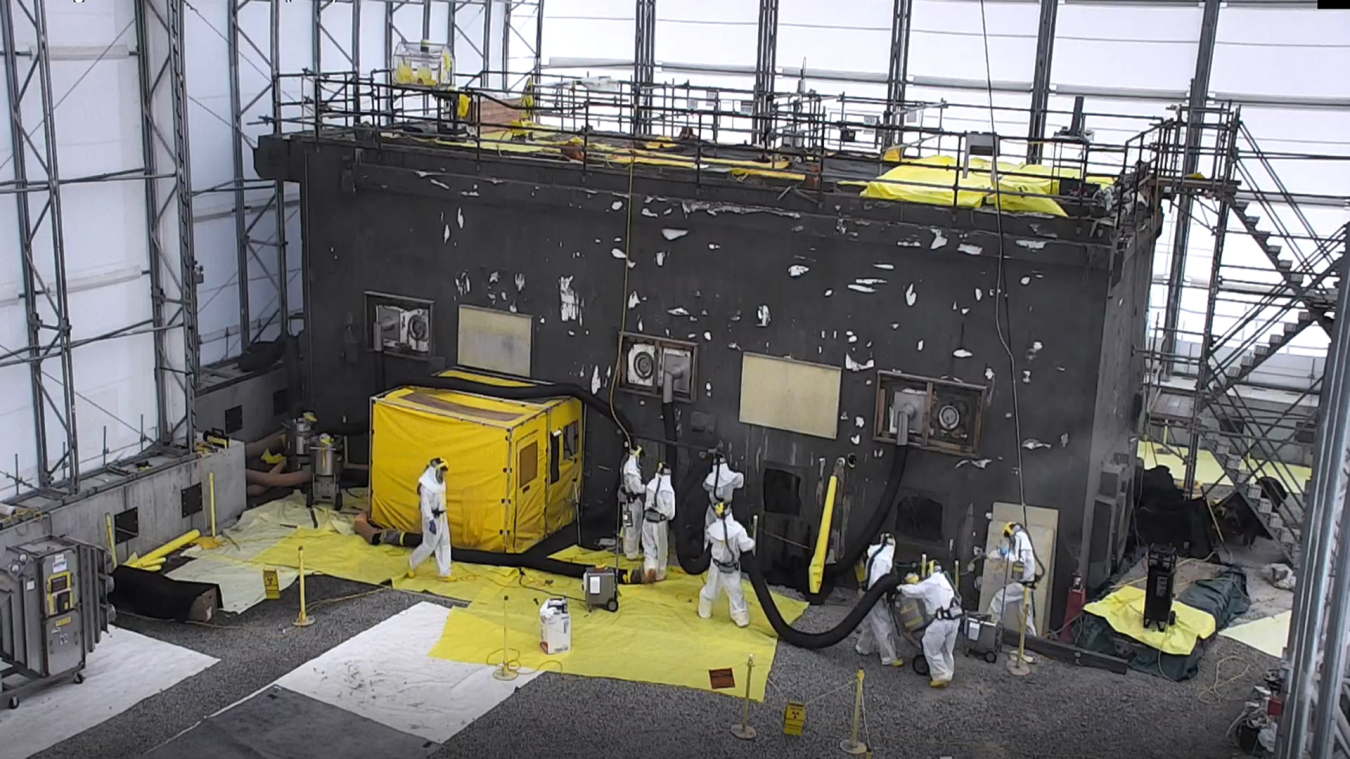Demolition is underway on the last remaining hot cell structure at the former Radioisotope Development Laboratory at Oak Ridge National Laboratory — a U.S. Department of Energy Office of Environmental Management priority for 2025.
Office of Environmental Management
May 27, 2025The Oak Ridge Office of Environmental Management and contractor UCOR installed a six-story protective cover over the former Radioisotope Development Laboratory demolition project to ensure surrounding research missions at Oak Ridge National Laboratory are not impacted.
OAK RIDGE, Tenn. — Demolition is underway on the last remaining hot cell structure at the former Radioisotope Development Laboratory at Oak Ridge National Laboratory (ORNL) — a U.S. Department of Energy Office of Environmental Management priority for 2025.
Removing the structure will complete demolition of the former laboratory, eliminate a significant risk, enable modernization at ORNL and open space to support ongoing research and science missions at the site.
“The hammers that we hear in the background are music to our ears,” said Mike Vestal, federal project manager. “We like to hear that because that means we’ve got to the main part we are trying to succeed at, which is demolishing the building and then successfully getting rid of the waste.”
Preparing this structure for teardown required years of planning and deactivation by the Oak Ridge Office of Environmental Management and cleanup contractor UCOR due to the levels of radioactivity inside.
“This marks the beginning of the end,” said Steve Clemons, ORNL portfolio federal project director. “This project has been going on for well over a decade. To get to this point is a great achievement. Not only does it mark a success there, but it also allows us to gain experience, knowledge and lessons learned that we will be able to apply to other projects across ORNL’s central campus.”
Demolition close-up: The final hot cell bank at the former Radioisotope Development Laboratory is divided into subcells A and B. Demolition is underway on subcell B, which comprises the far left side of the structure.
Workers collected samples, conducted deactivation tasks and performed extensive analysis to get the final hot cell structure from the former Radioisotope Development Laboratory ready for demolition.
Crews demolished the facility’s outer structure and the other five hot cells in the former laboratory, known as Building 3026, in previous years.
The cells were heavily shielded concrete rooms that provided researchers protection from radioactive material as they conducted research. The laboratory was built in 1945 to support isotope separation and packaging and was later used to examine irradiated reactor fuel experiments and components.
The final hot cell is divided into subcells A and B. Crews will demolish subcell B first. Next, workers will use remotely operated equipment to assist with deactivating subcell A due to the high radioactivity there. Demolition is scheduled for completion next year.
“This removal underscores the commitment to overall safety and meeting the environmental cleanup goals,” said Chad York, UCOR’s ORNL cleanup area project manager. “The strategic cleanup strategy required a deliberate, sequenced approach to ensure worker safety.”
-Contributor: Carol Hendrycks
To receive the latest news and updates about the Office of Environmental Management, submit your e-mail address.




